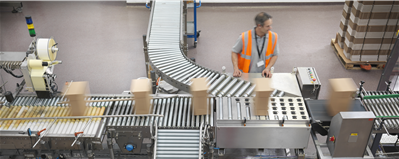The term downward death spiral can apply to a commercial printer, in-plant printer or a political candidate.
As I write this there are stories breaking about one of the political candidates in a downward death spiral, however we’ll save that for another day. This story is about a completely different death spiral: a disturbing one impacting struggling in-plant and commercial printers.

Last year at the 2015 Graph Expo show, I reported research I did with InfoTrends on benchmarking in-plant performance. In the presentation, we talked about: 13% of in-plants reporting losing money, 21% reporting loss of staff, 28% reporting printing less black and white pages, 27% reporting less offset pages printed, and 12% reporting declines in mailing.
These challenges are not limited to in-plant printers. In our consulting work, we are seeing the same trend impacting commercial printers.
This is most often true when either in-plants or commercial printers do not meet their financial objectives. This can result in companies cutting staff and/or increasing their prices. Reducing staffing can result in quality problems, late delivery and reduced customer satisfaction. In addition, increasing pricing can also result in unhappy customers. Unhappy customers often find another provider, which further pushes companies down this death spiral.
At the Graph Expo 2016 show in Orlando, my presentation was entitled, “New Strategies to Increase Your In-Plant’s Performance and Value.” Although targeted for in-plant printers, most of the ideas to help companies pull themselves out of this death spiral are just as relevant to commercial printers. The presentation was broken down into five sections that corresponds with a five step action plan we have created to help companies extricate themselves from this spiral.
- The first step in the process is to appreciate the importance of metrics and distinguish between good and bad measurements.
- The second step focuses on comparing performance to similar companies. Three benchmarks we discussed are operational, financial performance as well as measuring your customer’s perception of value compared to your best alternative.
- The third step describes how to make changes and monitor metrics to determine if those changes improved performance.
- The fourth step focuses on improving operational performance by: identifying root causes, overcoming bottlenecks, overcoming quality issues, training, cross training, and utilizing a variety of automation tools.
- The fifth step focuses on improved financial performance by reducing manufacturing costs, increasing value-added services, and changing the pricing model.
—
Howie Fenton is the Vice President of Consulting Services for IMG. He helps in-plants measure, identify and overcome operational issues. To learn more about measuring performance, benchmarking to leaders, increasing productivity, and improving your value, e-mail hfenton@imgresults.com.



